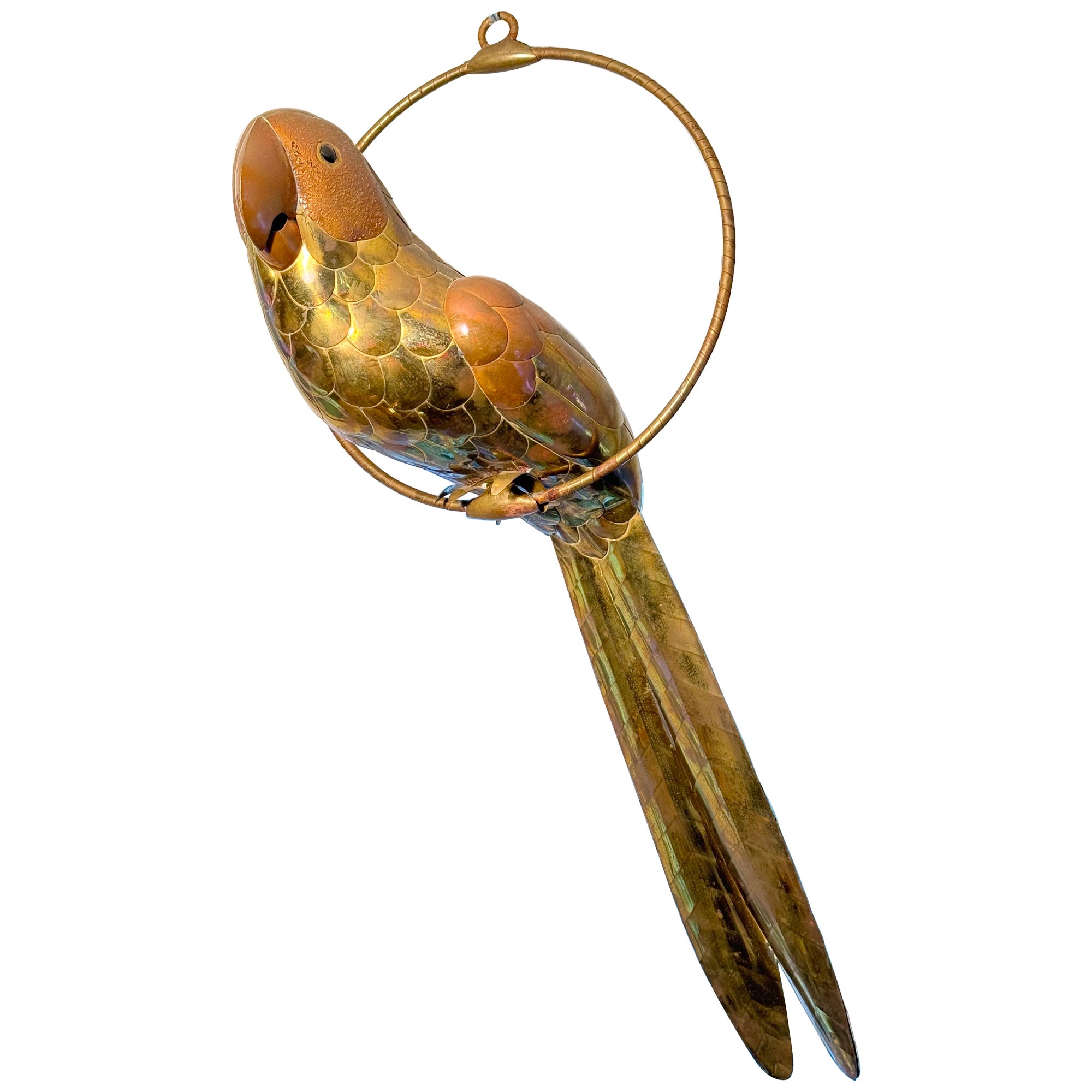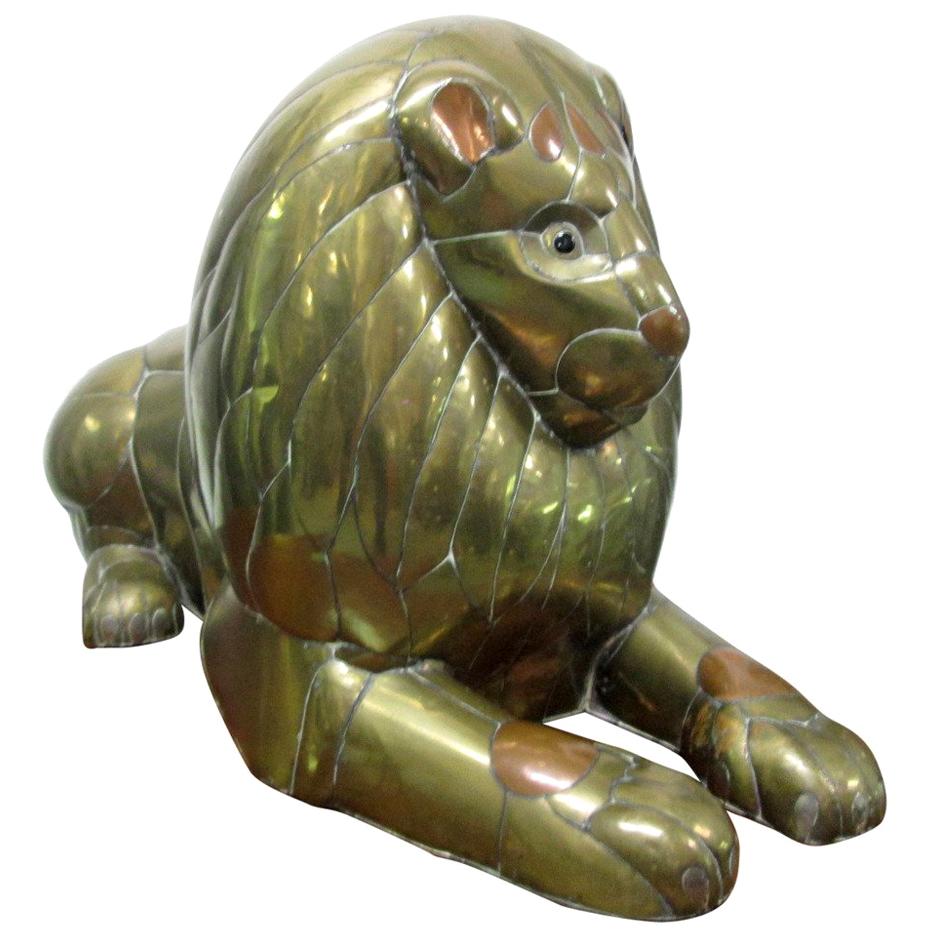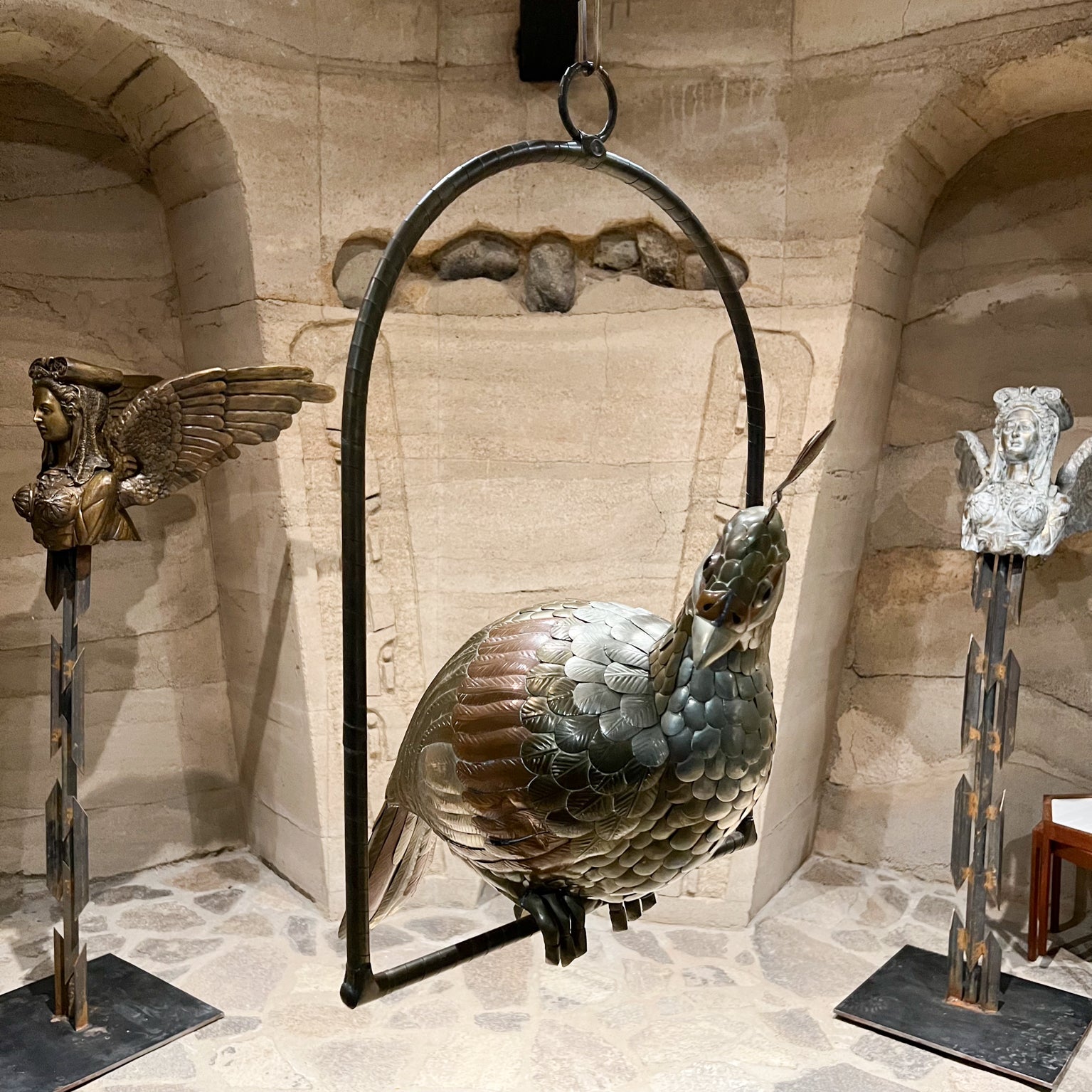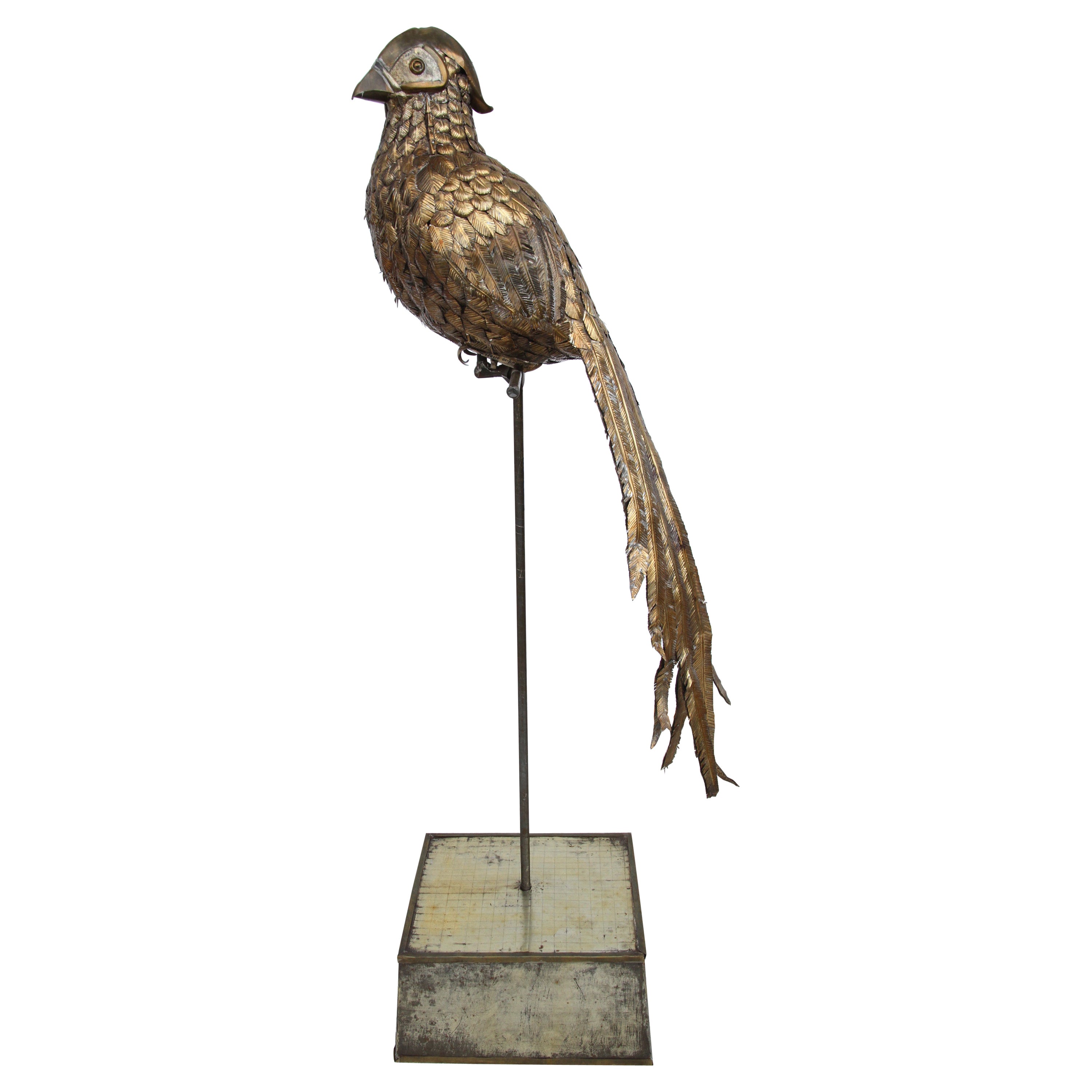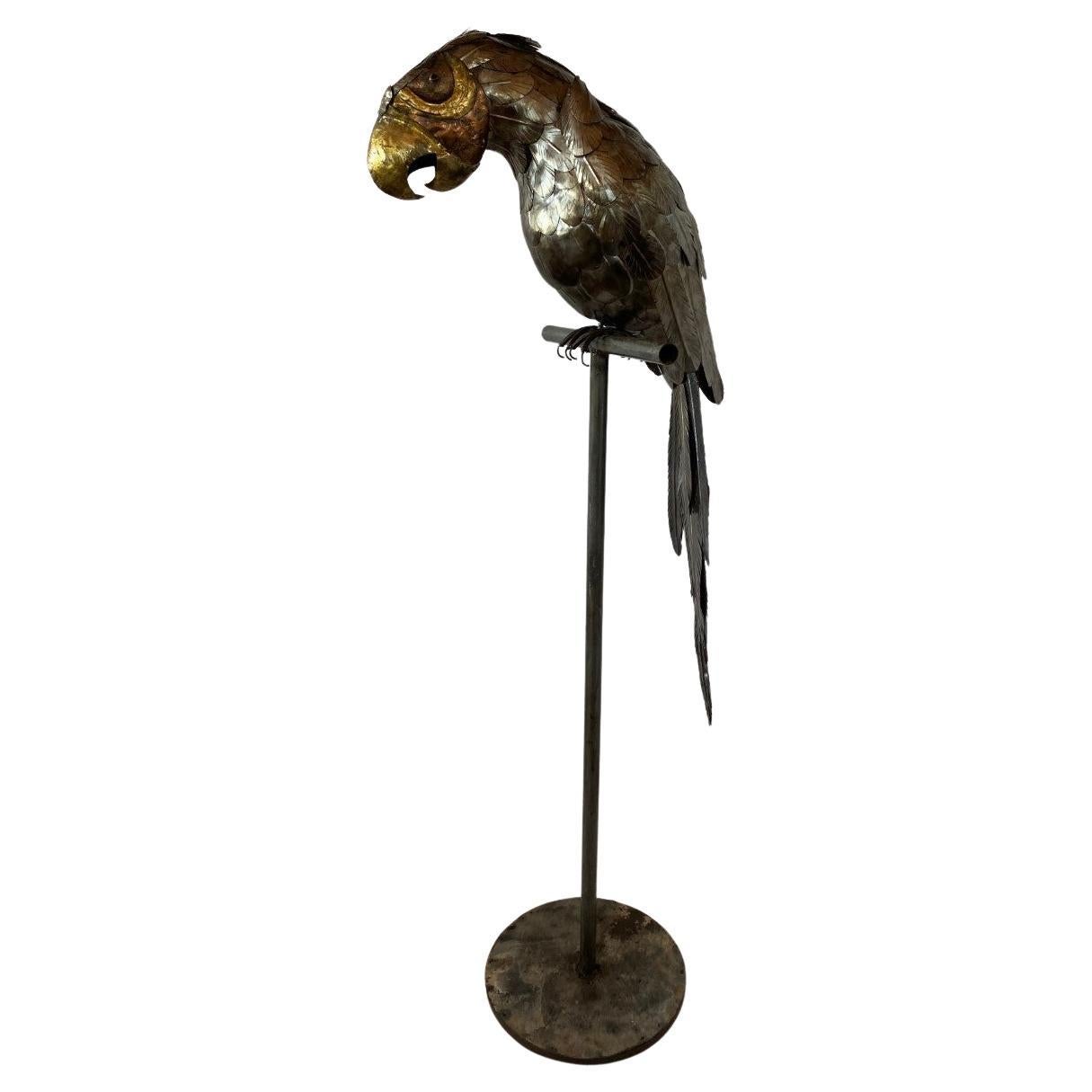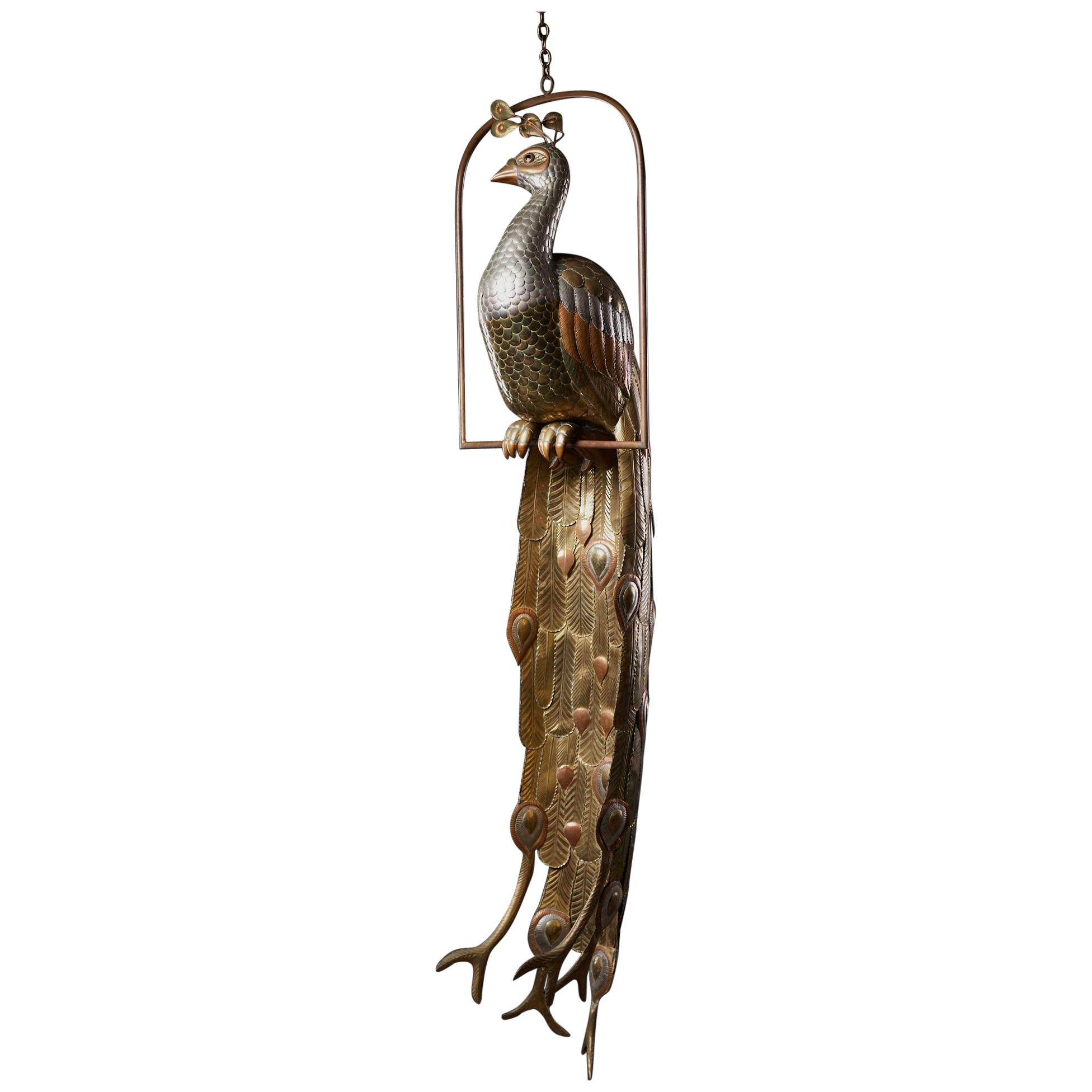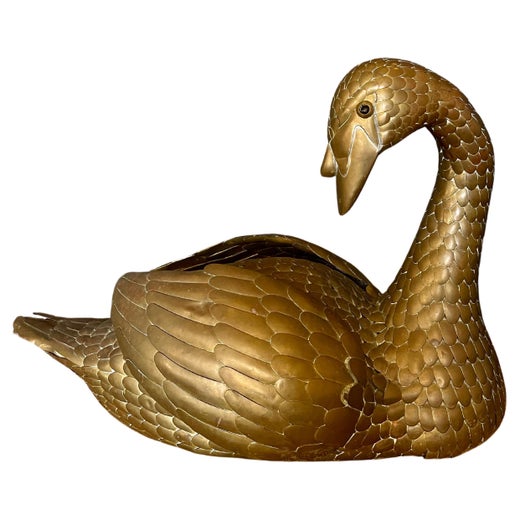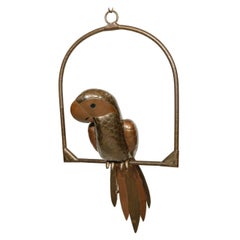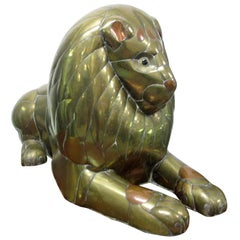
Sergio Bustamante Perched Parrot Sculpture 1/100
View Similar Items
Want more images or videos?
Request additional images or videos from the seller
1 of 6
Sergio Bustamante Perched Parrot Sculpture 1/100
About the Item
- Creator:Sergio Bustamante (Designer)
- Dimensions:Height: 22.5 in (57.15 cm)Width: 16 in (40.64 cm)Depth: 32 in (81.28 cm)
- Style:Mid-Century Modern (Of the Period)
- Place of Origin:
- Period:
- Date of Manufacture:1970s
- Condition:Wear consistent with age and use.
- Seller Location:Middlesex, NJ
- Reference Number:1stDibs: LU108047778883
Sergio Bustamante
Sergio Bustamante studied architecture at the University of Guadalajara, and sold his artwork while in school, beginning in 1960. After graduating, he worked with local ceramicists, eventually opening his studio. In 1972, Bustamante moved to Amsterdam, where he learned more about painting and design. In 1975, he established his Family Workshop Studio in Tiaquepaque, Mexico. His monumental sculptures can be found in several cities, including Puerto Vallarta, Guadalajara, and Tiaquepaque.
About the Seller
4.8
Vetted Seller
These experienced sellers undergo a comprehensive evaluation by our team of in-house experts.
Established in 2011
1stDibs seller since 2014
249 sales on 1stDibs
More From This SellerView All
- Alessandro Pianon ' Pulcini ' Murano Bird SculptureBy Vistosi, Alessandro PianonLocated in Middlesex, NJAlessandro Pianon ' Pulcini ' Murano Bird SculptureCategory
20th Century Italian Mid-Century Modern Animal Sculptures
MaterialsMurano Glass
- Large Signed Silas Seandel Wall SculptureBy Silas SeandelLocated in Middlesex, NJLarge Signed Silas Seandel wall sculpture.Category
Mid-20th Century American Mid-Century Modern Abstract Sculptures
MaterialsMetal
- Large Italian 1970s Brass 'Praying Mantis' Floor SculptureLocated in Middlesex, NJLarge Italian 1970s Brass 'Praying Mantis' Floor Sculpture.Category
20th Century Italian Mid-Century Modern Animal Sculptures
MaterialsBrass
- Leo Lionni Original No. 1 of 6 Sculpture the "Giraluna" from Parallel BotanyBy Leo LionniLocated in Middlesex, NJThe giraluna is a spectral plant entity from Leo Lionni's Classic alternate universe textbook Parallel Botany. About the Sculpture: The Giraluna This elusive and capricious plant is the Dream Queen of parallel botany. Hydendorp, quite rightly, does not hesitate to define it as the "most parallel of plants, most plantlike of the parallels," and in so doing he stresses not so much its physiognomic oddnesses as the disconcerting normality of its shape. "If we were in the jungle," he writes, "and we found one blocking our way, we would not for an instant hesitate to hack it down with our machetes."1 But it will not be our good fortune to encounter it. If in reconstructions the Giraluna displays considerable plantness of form and an exact and convincing solidity, in its natural environment it can be perceived only as a nebulous interplay of glimmerings and empty spaces which alternate in the darkness and vaguely suggest where its outlines might be. (pl. XXIV) Its nocturnal presence, in fact, is manifested almost entirely in terms of the equivocal O'-factor of the moonbeams, which was discovered and measured a few years ago by Dennis Dobkin of the Point Paradise Observatory. This factor changes the light-shade ratio which normally defines volumes into a subtle interplay of lucencies and opacities, so that our perceptions, our basic sensorial habits conditioned by thousands of years of daytime life in the "solar key," would need complete readjustment and indeed reversal in order to come to terms with it. Daylight isolates objects, bestowing a noisy Meaning on all the odds and ends in the world. But night takes everything away except the very soul of things: a black light, a transparent darkness, a secret we cannot grasp. During the long night of the Erocene era man caught a glimpse of the Giraluna rising mysteriously in its barren landscape. Presolar man imagined himself the child of the Moon. In her lap he had known the comfort of the life, silent torpor of the night, and by her light he had seen silver pearls lie weightlessly upon the coronas of the first great flowers. But he left us only a few enigmatic signs of all this: the Feisenburg cave, the petrified bones in the Ahmenstadt tumulus, the Boergen Cup. Paradoxically enough, all that we do in fact know of his presence in that landscape comes to us from our study of his nocturnal vegetation, Around the middle of the Erocene era, when the flowers of night were fading away in the light of a new dawn, man saw that outlines and colors were slowly hardening. Thus he discovered the stone-hard world of day, and learned to be the child of both Sun and Moon, of Amnes and Ra, of Disarm and Karak, of Nemsa and Taor. The "crawling stones" of Yorkshire, the stele of Tapur, the graffiti of Klagenstadt, these have preserved for us the nearly obliterated images of the two divinities who from the center of their temples drew the design of the universe. But the Sun was not long in attaining absolute power over everything in the world. "O Ra, o Amno Ra our benefactor, glowing and flaming! Gods and men bow down before you, for you are their creator and their only Lord." Such was the prayer of Amresh, High Priest of Egypt. And a new vegetation, outspoken and exuberant, appeared on the earth, and made the bright leaves dance in the morning breeze. Night soon became no more than a dark corridor joining one day to another, a place of visions and memories, a storehouse of words and images. It became a secret refuge where the vanished flowers could once more flaunt their coronas to the Moon. And thousands of years later the black flowers of that distant night-Giraluna, Lunaspora, Solea argentea-were born from seeds hidden deep in a soil rich with legends and stories. If our knowledge of the Giraluna is today reasonably complete and detailed this is due to the industry and scholarship of Professor Johannes Hydendorp of the University of Honingen, who has collected and collated all known facts and kept his records abreast of the latest developments. Our historical and geographical information comes from the most varied sources: legends and folk tales handed down from generation to generation, accounts given by explorers, anthropologists, and paleontologists, and of course the more recent testimony of botanists such as Heinz Hornemann and Pierre Maessens. Source: Sivatherium. narod .edu About Sculpture: Leo Lionni is best known today for his children's books: Little Blue and Little Yellow; Frederick—the one about the mouse who gathers poems while his family is harvesting seeds for the winter—Swimmy the Fish. Of course the children don't remember his name, but to parents and grandparents, the ones who actually do the reading, he is something of a celebrity. Most people don't realize that Lionni is also one of the 20th-century's most influential graphic designers. Within that field, he is a legend. In fact, he didn't start doing children's books until he had left the world of advertising, teaching, and design to allow more time for contemplation and for art. Little Blue and Little Yellow (1959) began as an improvised entertainment for bored grandchildren. What can you do with a few scraps of colored paper and a lot of imagination ? Make the first best-selling children's book illustrated with abstract art. Before that his work as design director for Olivetti Corporation of America and the art director of Fortune magazine, the co-founder of the Aspen...Category
20th Century American Mid-Century Modern Abstract Sculptures
MaterialsBronze, Steel
- Signed William Friedle Brutalist Wall SculptureBy William FriedleLocated in Middlesex, NJSigned William Friedle Brutalist wall sculpture.Category
Mid-20th Century American Mid-Century Modern Wall-mounted Sculptures
MaterialsMetal
- Large Mixed Metal Wall Sculpture by Silas SeandelBy Silas SeandelLocated in Middlesex, NJLarge mixed metal wall sculpture by Silas Seandel. Piece is signed and dated 1971.Category
20th Century American Mid-Century Modern Wall-mounted Sculptures
You May Also Like
- Sergio Bustamante Mixed Metal ParrotBy Sergio BustamanteLocated in Redding, CTSergio Bustamante Mixed Metal Parrot Sculpture. Perfect for that Palm Beach home. Gorgeous detailed artistry of a Brass and Copper feathered friend on his perch.Category
Vintage 1970s Mid-Century Modern Animal Sculptures
MaterialsMetal, Brass, Copper
- Copper and Brass Parrot by Sergio BustamanteBy Sergio BustamanteLocated in Cathedral City, CALifesize brass and copper Sergio Bustamante folk art parrot on a swing. Note that one of the tail feathers is loose and needs to be reattached to the o...Category
Vintage 1970s Mexican Mid-Century Modern Animal Sculptures
MaterialsBrass, Copper
- Sergio Bustamante Lion SculptureBy Sergio BustamanteLocated in New York, NYLion sculpture in patchwork brass and copper by acclaimed Mexican artist and sculptor, Sergio Bustamante. This was done in the late 1970s. Tons of handcrafted detail which defines th...Category
Vintage 1970s Mexican Sculptures
MaterialsBrass, Copper
- Sergio Bustamante Copper & Brass Parrot on a SwingBy Sergio BustamanteLocated in Stamford, CTBustamante brass parrot on a swing. Do not see a signature. In excellent condition. Bird comes off swing for packing.Category
Vintage 1970s Mexican Animal Sculptures
MaterialsBrass, Copper
- Sergio Bustamante Flamingo Standing SculptureBy Sergio BustamanteLocated in Westport, CTSergio Bustamante Large standing handmade Flamingo SculptureCategory
20th Century Mexican Mid-Century Modern Sculptures
MaterialsBrass, Bronze, Copper, Enamel, Metal
- Sergio Bustamante Style Owl SculptureBy Sergio BustamanteLocated in Mexico City, CDMXCirca 1970. We offer this Sergio Bustamante style mixed metal owl sculpture. With his graphic design of curled metal going in different directions around ...Category
Vintage 1970s Mexican Mid-Century Modern Animal Sculptures
MaterialsSteel
Recently Viewed
View AllMore Ways To Browse
Vintage Metal Fish
Vintage Curio
Greek Horse Sculpture
Vintage Pointers
Black Forest Animal Carvings
Antique Wooden Eagle
Antique Hand Carved Eagle
Birds Flying Sculpture
Hunting Dog Antique
Peacock 1930
Lion Hunting
Aquarium With Fish
Archimede Seguso Black
Marble Eagle Sculpture
Terracotta Bird
Italian Horse Head Sculpture
Silver Animal Ornaments
Vintage Carved Wood Eagle
